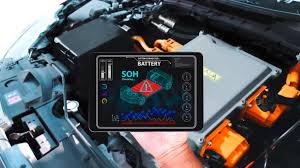Crafting Your Electric Kit Car: A Step-by-Step Guide

Are you ready to embark on a unique automotive adventure? Building your own electric kit car can be a rewarding experience, offering a blend of innovation, sustainability, and personalized performance. This guide is designed to walk you through the process, from understanding the basics of a DIY electric vehicle to completing the final touches on your custom creation.

As you begin, you’ll discover the benefits of choosing an electric kit car, including environmental advantages and the potential for significant cost savings. You’ll also learn about the legal considerations and regulatory compliance necessary for your project.
Key Takeaways
- Understand the basics of building an electric kit car
- Learn about the benefits and legal considerations
- Discover the step-by-step process of crafting your DIY electric vehicle
- Gain insights into customizing your vehicle for performance and sustainability
- Explore the environmental advantages of electric kit cars
Understanding Electric Kit Cars
The world of electric kit cars is gaining popularity, and understanding the basics is crucial for a successful build. Electric kit cars offer a unique blend of innovation, sustainability, and personalization, allowing enthusiasts to create their own electric vehicles.
What Is an Electric Kit Car?
An electric kit car is a vehicle that you can assemble yourself using a kit that includes all the necessary components, such as the chassis, electric motor, battery, and body panels. These kits are designed to be customizable, allowing you to tailor your vehicle to your preferences and performance goals. A custom electric car kit or electric car conversion kit provides the flexibility to choose the components that best suit your needs.
Benefits of Building Your Own Electric Vehicle
Building your own electric kit car has several benefits, including:
- Cost savings compared to buying a pre-assembled electric vehicle
- The ability to customize your vehicle to your exact specifications
- A deeper understanding of how your vehicle works, making maintenance easier
- The satisfaction of creating something with your own hands
Legal Considerations and Requirements
Before building your electric kit car, it’s essential to understand the legal requirements. These can vary by state and country, but generally include:
- Ensuring your vehicle meets safety and emissions standards
- Registering your vehicle with the relevant authorities
- Obtaining any necessary certifications or inspections
Researching and complying with these regulations will help ensure that your electric kit car is street legal and safe to drive.
Planning Your Electric Kit Car Project
Effective planning is the backbone of a successful electric kit car build. As you prepare to build your own electric car, you’ll need to consider several key factors to ensure your project stays on track.
Setting Your Budget and Timeline
Establishing a realistic budget and timeline is crucial. This involves:
- Breaking down the costs for components
- Scheduling your project realistically
Cost Breakdown for Components
When using an electric car building kit, costs can vary widely. Consider the expenses for the kit itself, batteries, motor, and any additional features you want.
Realistic Project Scheduling
Plan for potential delays and set achievable milestones. This will help keep your project on schedule.
Determining Performance Goals
Define what you want to achieve with your electric kit car. Are you looking for speed, range, or efficiency? Your goals will influence your design choices.
Choosing Between Full Kits and Custom Builds
Decide whether a full kit or a custom build is right for you. Full kits offer convenience, while custom builds provide flexibility.
Exploring Electric Kit Car Options on the Market
As you embark on building your electric kit car, it’s essential to explore the diverse options available in the market. The electric kit car market has grown significantly, offering a wide range of choices for both beginners and experienced builders.
Popular Electric Car Kit Manufacturers
Several manufacturers have made a name for themselves in the electric kit car industry. Some of the notable ones include:
- Manufacturer A: Known for their entry-level kits.
- Manufacturer B: Offers advanced kits with high-performance capabilities.
Entry-Level Kits for Beginners
Entry-level kits are perfect for those new to electric kit car building. They usually come with simpler designs and more straightforward assembly instructions.
Advanced Kits for Experienced Builders
For those with more experience, advanced kits offer complex designs and higher performance capabilities, allowing for a more customized build.
Comparing Kit Options and Specifications
When comparing different kit options, it’s crucial to look at the specifications, including the type of battery, motor power, and chassis design.
Evaluating Battery and Motor Configurations
Evaluating the battery and motor configurations is vital to ensure they meet your performance goals. Consider factors like range, acceleration, and top speed when making your decision.
Essential Tools and Equipment for Your Build
Your electric kit car build will rely heavily on the quality and appropriateness of your tools and equipment. To ensure a successful project, it’s crucial to have the right tools for the job.
Basic Mechanical Tools
A well-stocked toolkit is essential for any diy electric vehicle project. You’ll need basic mechanical tools such as wrenches, pliers, screwdrivers, and drills.
Specialized Electrical Tools
In addition to basic mechanical tools, you’ll require specialized electrical tools like multimeters, wire strippers, and soldering irons to work with the electrical components of your electric kit car.
Safety Equipment Requirements
Safety should be your top priority when working on your electric kit car. This includes personal protective gear and ensuring your workspace is safe.
Personal Protective Gear
Personal protective gear includes safety glasses, gloves, and a face mask to protect you from potential hazards.
Workspace Safety Considerations
Ensure your workspace is well-ventilated, well-lit, and free from clutter to prevent accidents.
| Tool Type | Examples | Purpose |
|---|---|---|
| Basic Mechanical | Wrenches, Pliers, Screwdrivers | General assembly and adjustments |
| Specialized Electrical | Multimeters, Wire Strippers, Soldering Irons | Working with electrical components |
| Safety Equipment | Safety Glasses, Gloves, Face Mask | Protecting against hazards |

Assembling the Chassis and Frame
The foundation of your electric vehicle lies in its chassis and frame assembly. A well-built chassis not only enhances the performance of your custom electric car kit but also ensures safety and durability.
Understanding Your Kit’s Frame Design
Before you start assembling, it’s crucial to understand the design and specifications of your kit’s frame. Review the manufacturer’s instructions and familiarize yourself with the components and their roles in the overall structure.
Step-by-Step Assembly Process
Assembling the chassis involves several key steps, including frame alignment and welding/fastening.
Frame Alignment Techniques
Proper alignment is critical to ensure the chassis is square and even. Use jigs and fixtures provided with your kit or recommended by the manufacturer to achieve accurate alignment.
Welding and Fastening Methods
Welding and fastening are crucial for the structural integrity of your chassis. Ensure you follow best practices for welding and use the recommended fasteners for your kit.
| Assembly Step | Technique | Tools Required |
|---|---|---|
| Frame Alignment | Use jigs and fixtures | Jigs, Fixtures, Measuring Tape |
| Welding | MIG or TIG Welding | Welding Machine, Safety Gear |
| Fastening | Tighten to specification | Torque Wrench, Fasteners |
Common Challenges and Solutions
During assembly, you may encounter issues such as misalignment or difficulty in welding. Consult the manufacturer’s support resources or online forums for solutions to these common challenges.
Installing the Electric Drivetrain
Now that you’ve laid the groundwork for your electric kit car, it’s time to install the electric drivetrain, a process that will give your vehicle its power and performance. This critical phase involves several key components that must be carefully installed and configured.
Motor Mounting and Alignment
The first step in installing the electric drivetrain is mounting the motor. This requires careful alignment to ensure optimal performance and to prevent undue stress on the motor and other components. Proper alignment is crucial for the longevity and efficiency of your electric kit car. Use the manufacturer’s guidelines to secure the motor in place, and double-check the alignment before proceeding.
Battery Installation and Configuration
Battery installation is another critical aspect of the drivetrain installation. You’ll need to carefully plan the placement of your battery pack, considering factors like weight distribution, accessibility, and safety. Ensure that the battery pack is securely fastened to prevent any movement during operation.
Battery Management Systems
A Battery Management System (BMS) is essential for monitoring and controlling the battery pack’s state of charge, voltage, and temperature. The BMS helps to optimize battery performance and longevity. Make sure to follow the manufacturer’s instructions for integrating the BMS with your battery pack.
Cooling Solutions for Battery Packs
Effective cooling is vital for maintaining the health and performance of your battery pack. Consider implementing a cooling system that is appropriate for your battery type and configuration. Adequate cooling can significantly enhance the lifespan and efficiency of your batteries.
Wiring the Motor Controller and Components
The final step involves wiring the motor controller and other electrical components. This requires meticulous attention to detail to ensure that all connections are secure and correctly configured. Follow the wiring diagram provided with your electric car conversion kit to avoid any mistakes. Verify that all components are properly connected before testing the system.
By carefully installing the electric drivetrain, you’ll be one step closer to completing your electric kit car project. This phase lays the foundation for the vehicle’s performance and efficiency, making it a crucial part of the build process.
Completing Interior and Exterior Components
With the chassis and electric drivetrain in place, it’s time to turn your attention to the body panels, interior wiring, and other components that will bring your electric kit car to life. This stage is crucial for both the aesthetics and functionality of your vehicle.
Body Panel Installation
Installing body panels requires precision to ensure a perfect fit and finish. Start by aligning the panels according to the manufacturer’s instructions, and secure them using the recommended fasteners. Pay attention to the gaps between panels and the overall symmetry of the bodywork.
Interior Wiring and Components
The interior wiring involves connecting various components such as the dashboard, controls, and comfort features. Ensure that all wiring is neatly routed and secured to prevent damage or interference.
Dashboard and Control Systems
The dashboard and control systems are critical for the operation of your electric kit car. Install a user-friendly dashboard that includes essential gauges and controls within easy reach.
Comfort and Convenience Features
Adding comfort and convenience features can significantly enhance your driving experience. Consider integrating features like heated seats, a premium sound system, or advanced infotainment systems.
Finishing Touches and Aesthetics
The finishing touches, including paintwork, trim, and interior upholstery, play a significant role in the overall appearance of your electric kit car. Choose high-quality materials and consider professional help if needed to achieve a showroom finish.
| Component | Description | Considerations |
|---|---|---|
| Body Panels | External panels that form the car’s body | Material, alignment, and finish |
| Dashboard | Control center with gauges and controls | User interface, ergonomics |
| Comfort Features | Heated seats, infotainment systems | Enhance driving experience, convenience |
As you complete the interior and exterior components, remember that the quality of these elements will significantly impact your overall satisfaction with the electric kit car. Take your time to ensure that every detail is attended to, resulting in a vehicle that is both a joy to drive and a pleasure to own.
“The devil is in the details.” This old adage is particularly true when it comes to completing the interior and exterior of your electric kit car. Every component, no matter how small, contributes to the overall driving experience.
Conclusion: Testing and Registering Your Electric Kit Car
Now that you’ve completed building your diy electric vehicle, it’s time to test and register it. Thorough testing is crucial to ensure your custom electric car kit is safe and functional. Check all electrical systems, including the battery, motor, and wiring, to identify any potential issues.
Once you’re satisfied with the performance and safety of your vehicle, you can proceed with the registration process. This typically involves obtaining a vehicle identification number (VIN) and complying with local regulations regarding electric vehicles. Be sure to consult with your local Department of Motor Vehicles (DMV) for specific requirements.
By following this guide, you’ve gained the knowledge and skills necessary to successfully build and register your electric kit car. With your new diy electric vehicle, you’ll be enjoying a unique driving experience while contributing to a more sustainable transportation solution.
FAQ
What is an electric kit car?
An electric kit car is a vehicle that you can assemble yourself using a kit that includes all the necessary components, such as the chassis, electric motor, battery, and body panels, to build an electric vehicle.
What are the benefits of building my own electric kit car?
Building your own electric kit car allows you to customize the vehicle to your preferences, potentially save money compared to buying a pre-made electric vehicle, and gain hands-on experience with electric vehicle technology.
Are there any legal considerations I need to be aware of when building an electric kit car?
Yes, you need to comply with local and national regulations regarding electric vehicles, including safety standards, emissions regulations, and registration requirements. It’s essential to research and understand these regulations before starting your project.
How do I choose the right electric kit car for my needs?
To choose the right electric kit car, consider factors such as your budget, desired performance, and level of expertise. Research different kit manufacturers, compare specifications, and read reviews to find a kit that suits your needs.
What kind of tools and equipment do I need to build an electric kit car?
You will need a range of tools, including basic mechanical tools, specialized electrical tools, and safety equipment. The specific tools required may vary depending on the kit you choose and your level of expertise.
Can I use a DIY electric vehicle kit to build a car from scratch?
Yes, you can use a DIY electric vehicle kit to build a car from scratch. These kits usually include all the necessary components, and some manufacturers provide detailed instructions and support to help you through the process.
How do I ensure the safety of my electric kit car?
To ensure the safety of your electric kit car, follow proper building techniques, use high-quality components, and thoroughly test the vehicle before use. Additionally, consider implementing safety features such as a battery management system and crash structures.
What are some popular electric car kit manufacturers?
There are several popular electric car kit manufacturers, including companies that specialize in electric vehicle conversions and custom kit cars. Researching these manufacturers and their products can help you find the right kit for your project.
Can I customize my electric kit car with different components?
Yes, one of the benefits of building your own electric kit car is the ability to customize it with different components, such as batteries, motors, and body panels, to suit your preferences and performance goals.
How do I register my electric kit car with the relevant authorities?
The process for registering an electric kit car varies depending on your location. Typically, you will need to provide documentation, such as proof of ownership and compliance with safety and emissions regulations, to register your vehicle.
What are the advantages of using a custom electric car kit?
Using a custom electric car kit allows you to tailor the vehicle’s specifications to your needs, potentially resulting in a more efficient, powerful, or feature-rich vehicle that meets your specific requirements.
Are affordable electric car kits available?
Yes, there are affordable electric car kits available, catering to different budgets and levels of expertise. Researching and comparing different kits can help you find an affordable option that suits your needs.






















































































































































































































































































































